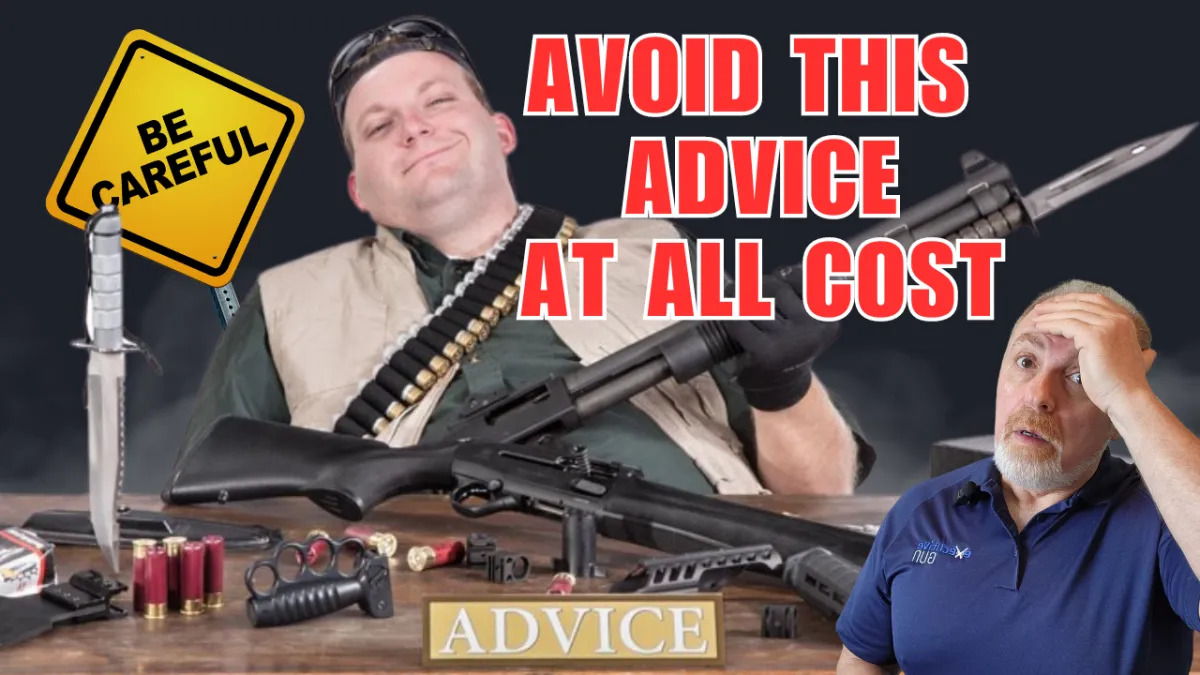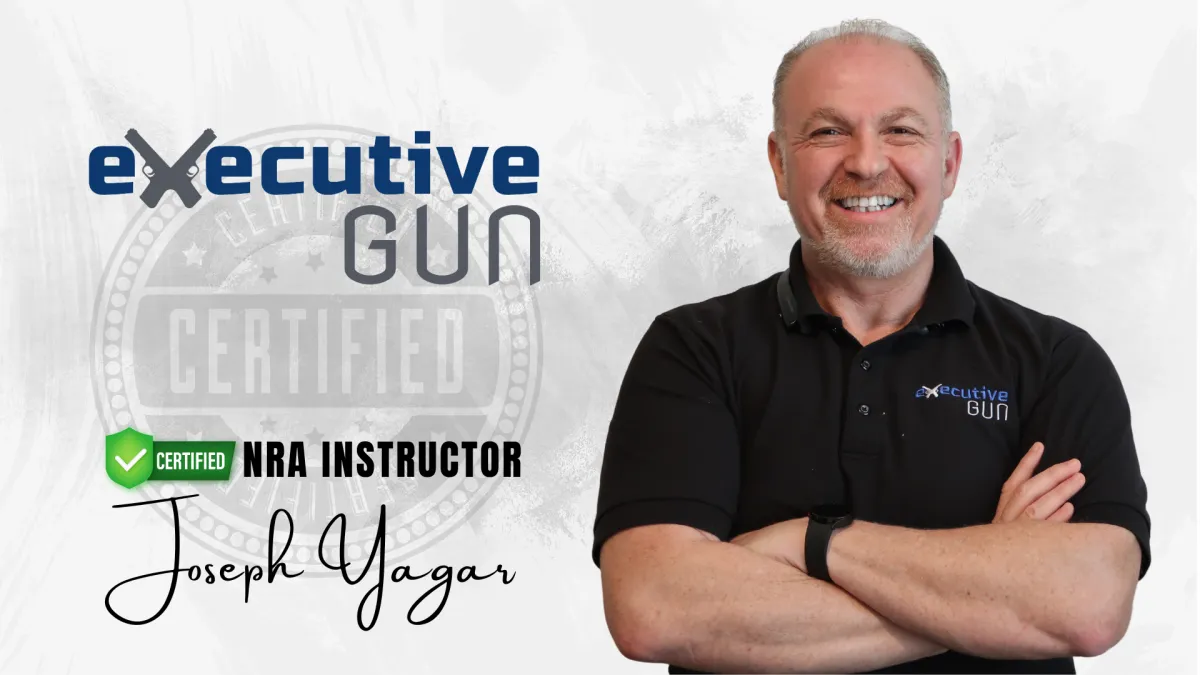

Blog
Tips, Training and News From Executive Gun

Bad Advice!
How many of you start a new activity with the best of intentions to learn and become good at it only to end up with information overload and utterly confused?
Well, firearms training is no different. However, there is a lot less room for error with guns.
When you’re around firearms and shooting ranges as much as I am, you see, hear, and read all sorts of advice. Some good and some bad, but some advice is outright horrific.
There isn’t enough time to cover all the bad advice out there, so I’ll share 5 pieces of common advice, I believe you should avoid at all costs.
1. Shoot the legs.
If all else fails and you are forced to use your firearm in self-defense, you’ll almost definitely have to stop a moving threat.
The legs are narrow targets that are moving fast. The same goes for the arms and head.
However, everything is attached to a torso. In the gun world, we call it Center Mass.
It’s the biggest area to hit and moves the least.
When you have but a second or two to get enough shots off to stop the threat, that’s what you shoot at. Not the legs.

2. Store your gun and ammunition separately.
That applies primarily to home or office defense guns.
It’s 3am. You’re fast asleep and woken up when you hear glass shatter and footsteps inside your house. You’re still in a fog and not sure whether to call 9–1–1 or grab your gun when you hear the knob on your bedroom door turning.
You decide to go for your gun which is in the safe, and then your box of ammunition which is in a shoe box on the top shelf of your closet. You then have to load your magazine, insert it into your gun, rack the slide, clearly identify the threat and shoot.
This would be difficult when you’re fully awake, never mind out of a dead sleep.
Do not store your gun and ammo separately. Unless you’re highly trained, you’ll likely panic. Your adrenaline will skyrocket, you will be shaking, you won’t feel your extremities, and your hands will sweat.
Try loading a magazine, inserting it in a gun, remembering to rack the slide. disengage the safety, and finally point and shoot.
Your chances of winning that encounter are slim to none.
I understand that having a loaded gun in the house is nerve wrecking when you’re new to firearms. You’re afraid of it going off, or that one of your kids will tinker with it and hurt themselves or someone else.
If that’s the case, get a reliable safe and educate your kids adequately so your fears won’t come true.
Home invasions and violent attacks are unannounced and happen fast. There is no time for theories and senseless “common sense” gun laws.
Your life and that of your loved ones are in danger. You should have to do nothing more than grab your gun and stop the threat. Storing your gun and ammo separately will not cut it.

3. Shoot To Wound. Not to kill.
The vast majority of self-defense incidents when a firearm is used happen at a distance of 3 yards, 3 shots are fired, and are over in 3 seconds. There is no time to think. Only react. How effective you are will depend on your training.
Your objective is to stop the threat. Period!
That doesn’t mean wound or kill. It means causing the attacker to stop his or her threatening behavior.
That may happen by the mere sight of your firearm. That may happen after 1 shot or a few. Once the threatening behavior stops, for example, the attacker flees, surrenders, or drops to the ground from being shot, you stop using or threatening to use deadly force, confirm that you are safe, and call 9–1–1, and then your lawyer.
Whether the attacker is just wounded, or dead is not your concern. Your safety and that of your loved ones is.
Attackers take the risk of harm and or death to themselves when they decide to attack.
Our intention should never be to cause harm or death with or without deadly force, but unless we are very highly trained reacting with certainty to just wound an assailant is too much to ask of mere mortals like most of us are.
4. There is no substitute for real recoil so don’t waste your time with dryfire.
Anyone who tells you that has no idea what dryfire is all about.
Dryfire includes any firearm related training without live ammunition. Not just pulling the trigger.
For example: Safety inspections, Presentation from the holster, emergency reloads, transitioning between targets, moving in and out of cover, moving and shooting, identifying and clearing malfunctions, and so much more. Not to mention that doing the proper dryfire drills will significantly improve your performance at the range and as a shooter and defender overall.
The wear and tear on your firearm is par for the course and well worth it for the results you get. You can dramatically improve your skills without firing a single shot.
So, in my humble opinion, 80% of your training should be with dryfire, and 20% at the range.

5. Buying a gun before learning how to shoot.
That is one of the most frustrating things for gun owners and instructors alike.
It happens most frequently when there is a crisis of some sort. Social unrest, a traumatic incident, or the perception that the world is going nuts.
Even people who never believed in guns go and buy them and those who sell them will gladly take your money.
A salesman behind the counter, no matter how knowledgeable about the guns he sells, will likely sell you a gun based in their own bias and the more expensive the better.
That doesn’t mean that what you’re buying isn’t a quality gun. But just because it’s the most popular gun doesn’t mean it’s the right one for you.
Using a gun in self-defense requires a certain set of skills. The gun you trust your life with becomes an extension of you. And using it under duress, and without time to think means you have to be able to manipulate that gun without difficulty or discomfort. That will not happen if it’s the wrong gun for you.
The right way to buy a gun is to first learn the basic skill sets necessary for self-defense. Then, under the supervision of a certified instructor test drive multiple guns. The gun with which you can perform the skills you learned without difficulty and with relative comfort should be the one.
I can tell you from experience that those who buy a gun without having ever shot a firearm, and then hire me to teach them how to shoot it, end up regretting their purchase and buying a different gun.
Learn the skills first and buy a gun later.
Gun ownership comes with great responsibility. So, the advice given and taken should be carefully considered. Your life and that of your loved ones depends on it.
Subscribe to Executive Gun Blog and Get Notified When We Post a New Update, Training Trick Or Second Amendment News...

Get Your Florida Concealed Carry Permit With Executive Gun Today!!
Start Watching Our Free Florida Concealed Carry Masterclass™ Now and Get Certified Same day...
All rights Reserved. Copyright 2025 Executive Gun

